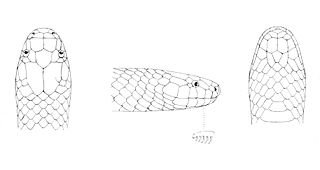
The New Guinea big-eared bat or Papuan big-eared bat,, is a vesper bat endemic to Papua New Guinea. It is listed as a critically endangered species due to ongoing habitat loss. It is the only known member of the genus Pharotis, which is closely related to Nyctophilus.

Loria's satinbird or velvet satinbird, formerly known as Loria's bird-of-paradise, is a species of bird in the family Cnemophilidae. It is found in the New Guinea Highlands. Its natural habitats are subtropical or tropical moist lowland forests and subtropical or tropical moist montane forests.

Dolichoderus is a genus of ants found worldwide.

Dineutus loriae is a species of beetle within the family of whirligig beetles, or Gyrinidae. The species name loriae honors the Italian explorer Lamberto Loria (1855–1913). This beetle can reach a length of about 20 mm.
Dolichoderus affinis is a species of ant in the genus Dolichoderus. Described by Emery in 1889, the species is endemic to various countries of Asia.

Dolichoderus beccarii is a species of ant in the genus Dolichoderus. Described by Emery in 1887, the species is endemic to Borneo and Indonesia.
Dolichoderus debilis is a species of ant in the genus Dolichoderus. Described by Emery in 1890, the species is found in many countries in two continents, including Bolivia, Brazil, Colombia, Costa Rica, French Guiana, Guatemala, Guyana, Panama, Suriname, Trinidad and Tobago and Venezuela.

Dolichoderus feae is a species of ant in the genus Dolichoderus. Described by Carlo Emery in 1889, it is endemic to multiple countries, notably China, India, Myanmar (Burma) and Thailand.
Dolichoderus furcifer is a species of ant in the genus Dolichoderus. Described by Emery in 1887, the species is endemic to Indonesia.
Dolichoderus gagates is a species of ant in the genus Dolichoderus. Described by Emery in 1890, the species is endemic to multiple countries, including Bolivia, Brazil, French Guiana, Guyana, Suriname and Venezuela.

Dolichoderus germaini is a species of ant in the genus Dolichoderus. Described by Emery in 1894, the species is endemic to Brazil, Mexico, Paraguay and Peru.
Dolichoderus ghilianii is a species of ant in the genus Dolichoderus. Described by Emery in 1894, the species is endemic to Brazil, and Peru.
Dolichoderus imitator is a species of ant in the genus Dolichoderus. Described by Emery in 1894, the species is endemic to Bolivia, Brazil and Ecuador.
Dolichoderus modiglianii is a species of ant in the genus Dolichoderus. Described by Carlo Emery in 1900, the species is endemic to Indonesia.
Dolichoderus tricolor is a species of ant in the genus Dolichoderus. Described by Emery in 1914, the species is endemic to New Caledonia.
Dolichoderus tricornis is a species of ant in the genus Dolichoderus. Described by Emery in 1897, the species is endemic to New Guinea.
Lamberto Loria was an Italian ethnographer, naturalist and explorer.

Boulenger's bow-fingered gecko is a species of gecko, a lizard in the family Gekkonidae. The species is endemic to Papua New Guinea.

Toxicocalamus loriae, also known commonly as the Loria forest snake, is a species of venomous snake in the family Elapidae. The species is endemic to New Guinea and occurs in both Western New Guinea (Indonesia) and Papua New Guinea.








